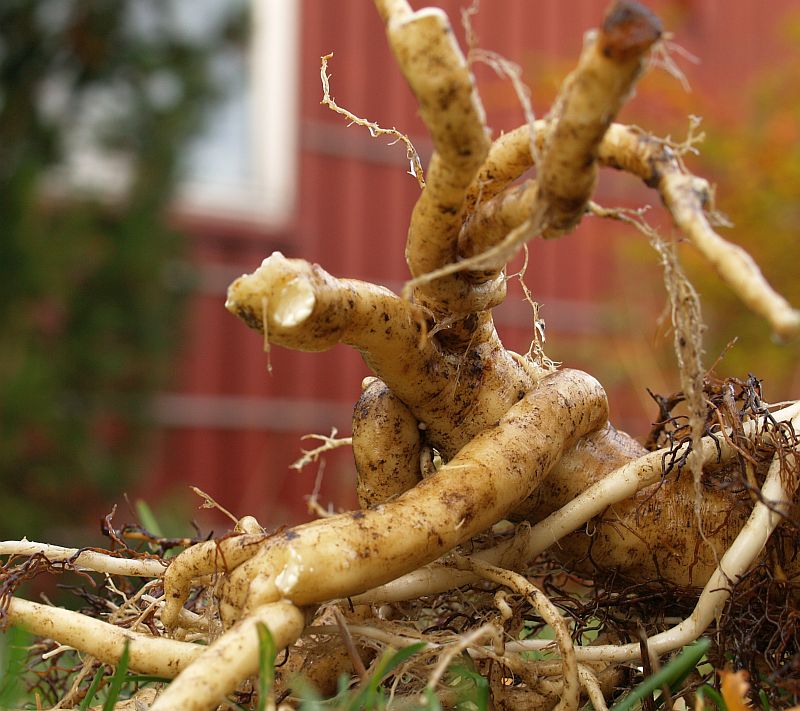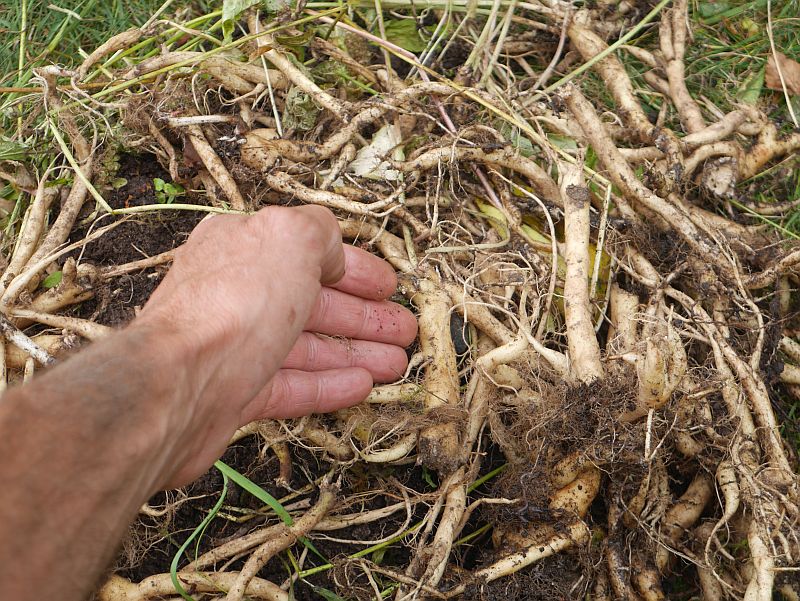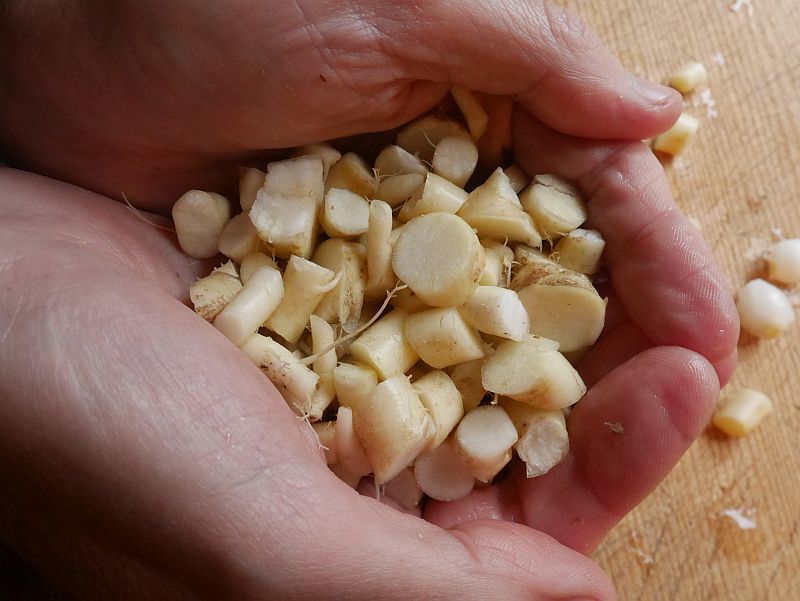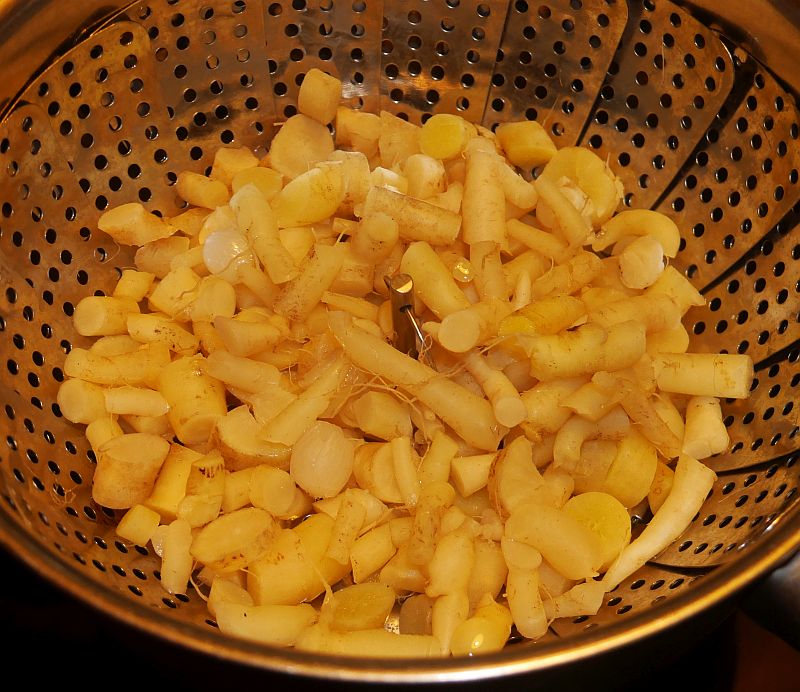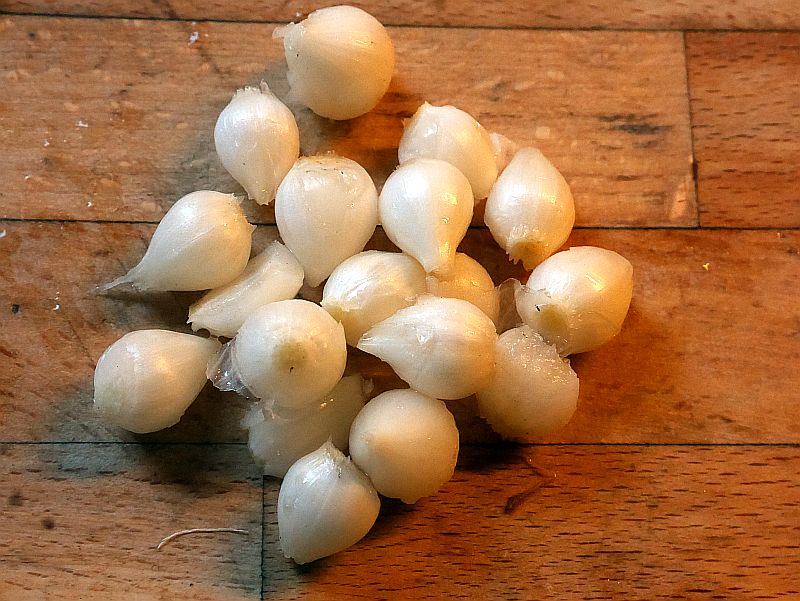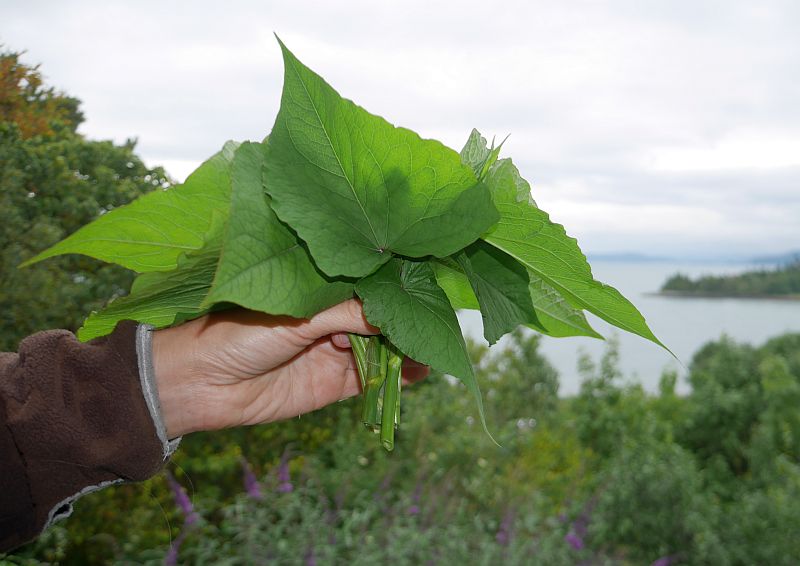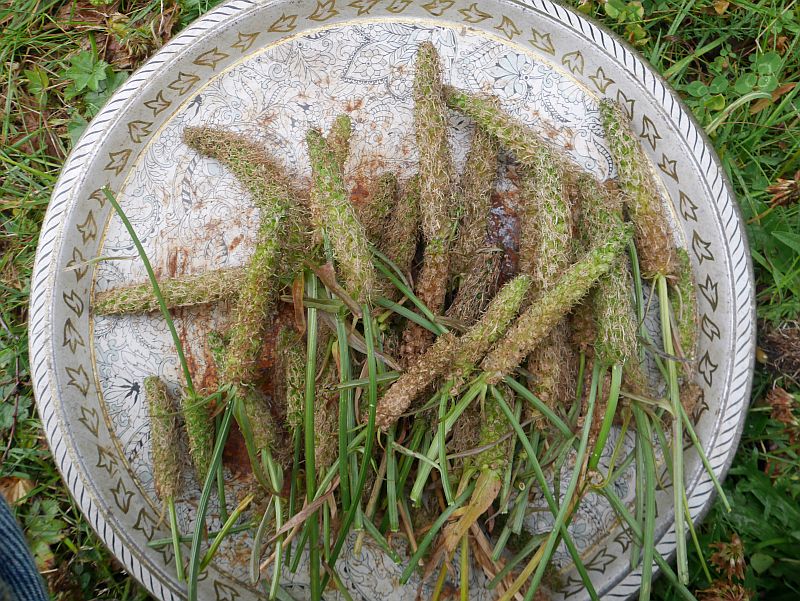The most successful of the half dozen Phyteuma species I’ve tried in my garden has been a plant received as Phyteuma nigrum (syn. Phyteuma spicatum ssp nigrum), black rampion or (Norwegian) svartvadderot. It has much darker flowers than Phyteuma spicatum, sometimes almost black. I planted it from seed propagated plants in 2003 and this picture is from 2006-2007:
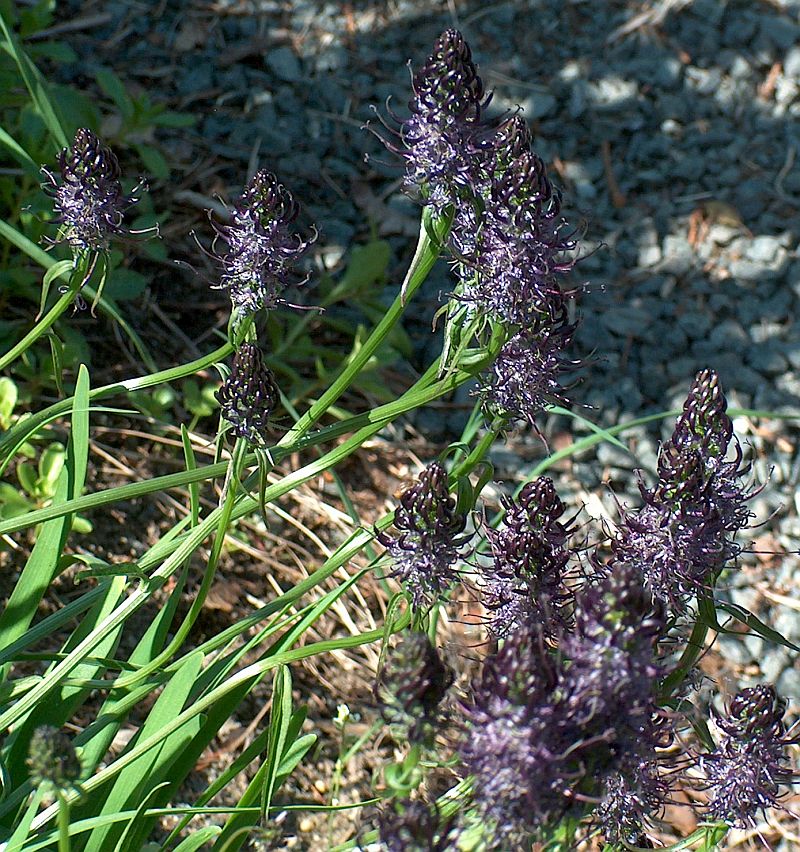
It has self-sowed freely and seems to have crossed with other accessions of Phyteuma spicata with white and blue (ssp. caeruleum) flowers that I have in my garden (these have not self-sowed much) as there is now a mix of colours in the original spot I planted nigrum. Phyteuma spicatum/nigra is also the most popular bee plant in my garden in mid-June and a great edimental (one of the edi-entomentals, plants combining food, ornament as well as good for bees and other pollinators!). Phyteuma spicatum (rapunsel) is a very old root vegetable in Europe, mentioned already in Gerard’s Herball from 1597, but best known as a vegetable in France and Germany! The name rapunsel is related to rapa (turnip) due to its use as a root vegetable!
See my blog post from 23rd June 2017 with pictures and video of black rampion: http://www.edimentals.com/blog/?p=11910
I tried Phyteuma spicatum as a root vegetable in 2013 and was struck by its good sweetish taste:
I harvested a lot of plants this week (late July 2018) while remaking the bed where it was growing and was impressed by the good size of roots and yields, although it is unknown how old the individual plants were (I plan to grow some of the smaller plants elsewhere to see how quickly they grow in a shady area of the garden, as this could be a good forest garden plant, although, like Jerusalem artichoke, plants in the Campanulaceae to which Phyteuma belongs, contain the diabetic friendly but poorly digestable carbohydrate inulin):
The flower heads can also be used as a vegetable, reminiscent of Bath Asparagus flower heads (Ornithogalum pyrenaicum) see the picture from its wiki page:

I saw the plant in the wild for the first time in Austria in the Alps on my Arche Noah tour in 2017 (see http://www.edimentals.com/blog/?p=11483), the white flowered form, growing in open woodlands.
In Norway, it grows wild a few places in southern Norway and has also naturalised in parks, including the great garden at Baroniet Rosendal (see the video and pictures at http://www.edimentals.com/blog/?p=15680). It is also found in the far north of Norway in Finnmark where it naturalised during World War II, introduced by the Germans with horse forage!
The name rapunsel is related to rapa (turnip) due to its use as a root vegetable!
http://www.edimentals.com/blog/?p=11910 (with video)
Other European languages: Raiponce en épi (French), ährige Teufelskralle (German), ährige Rapunzel (Swiss German), and Raponzolo giallo (Italian)
I’ll be offering seed this autumn via Norwegian Seed Savers (KVANN):

